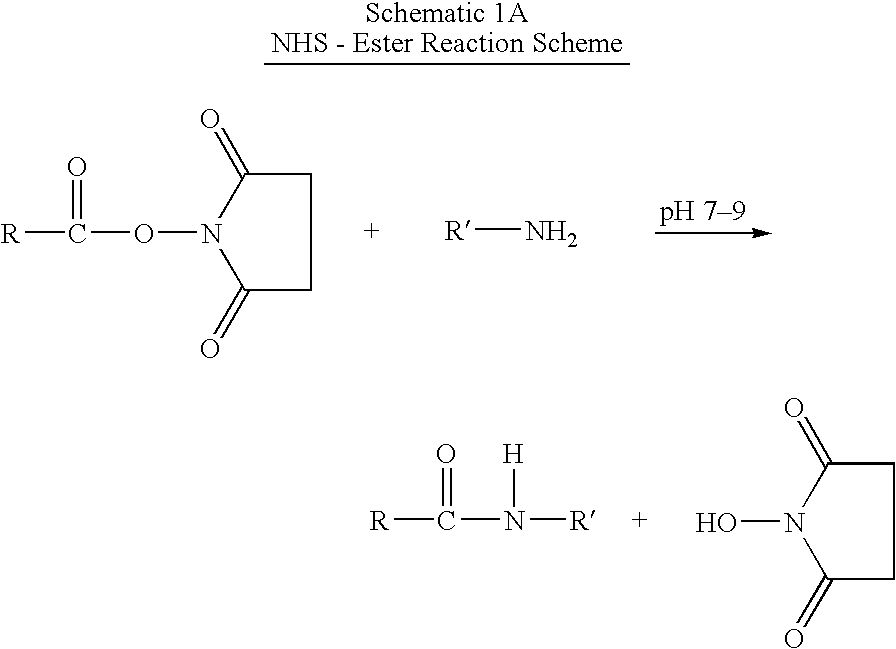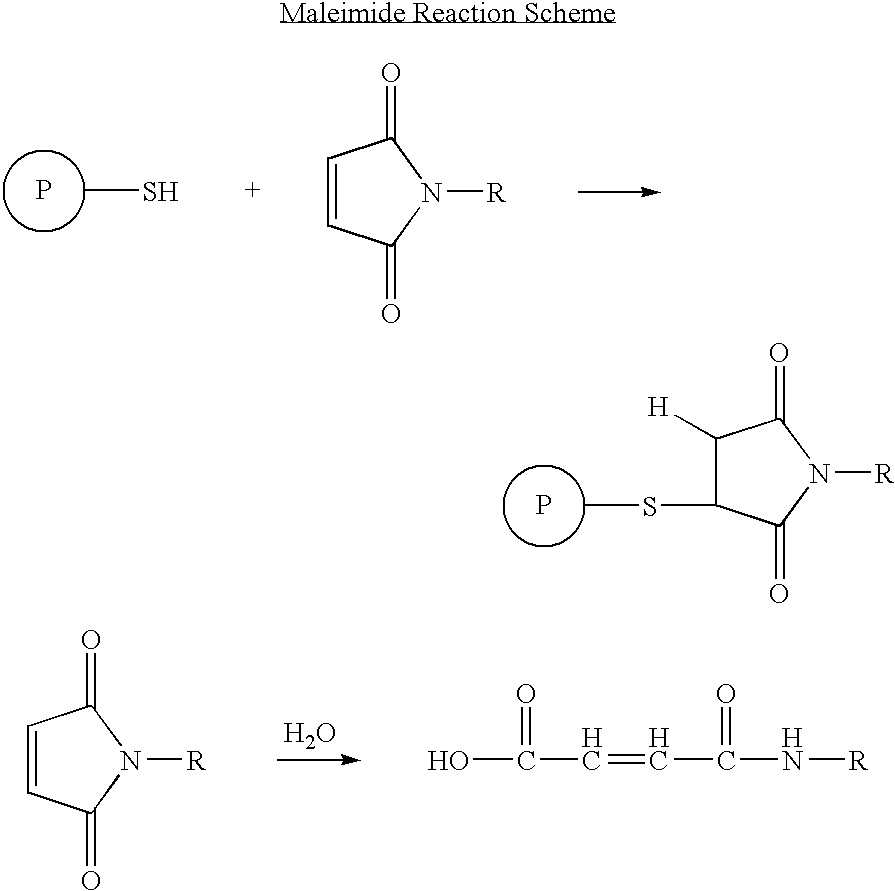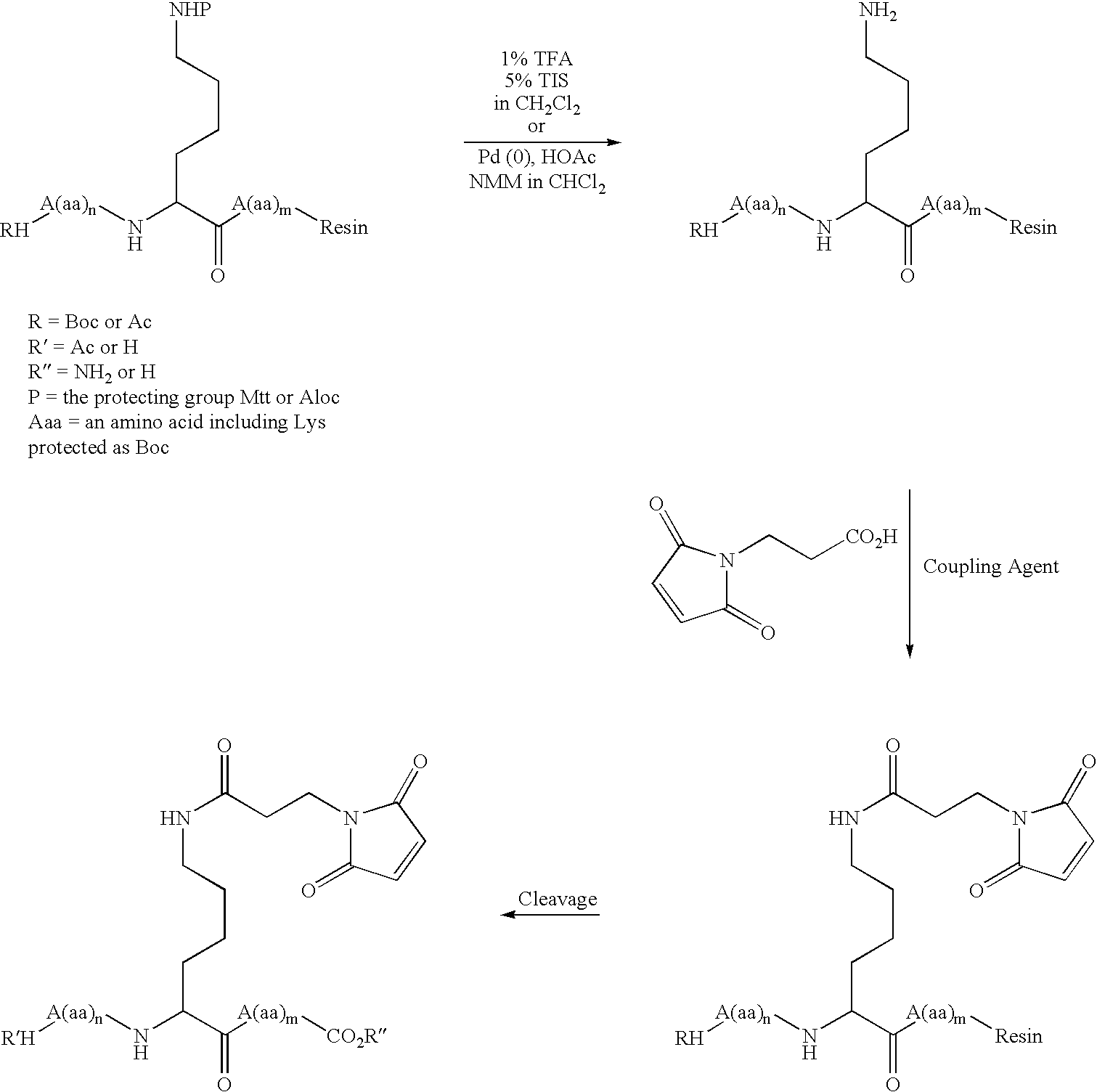Protection of endogenous therapeutic peptides from peptidase activity through conjugation to blood components
a technology of endogenous therapeutic peptides and conjugated blood components, which is applied in the direction of peptide sources, antibody medical ingredients, peptide/protein ingredients, etc., can solve the problems of short plasma half-life of such therapeutic peptides, the method is quite uncomfortable for patients, and the degradation even more rapid
- Summary
- Abstract
- Description
- Claims
- Application Information
AI Technical Summary
Benefits of technology
Problems solved by technology
Method used
Image
Examples
example 1
Addition of Lys at C-Terminus of Kringle-5 Preparation of NAc-Pro-Arg-Lys-Leu-Tyr-Asp-Tyr-Lys-N H2.3TFA
[0363] Using automated peptide synthesis, the following protected amino acids were sequentially added to Rink Amide MBHA resin: Fmoc-Lys(Boc)-OH, Fmoc-Tyr(tBu)OH, Fmoc-Asp(OtBu)-OH, Fmoc-Tyr(tBu)OH, Fmoc-Leu-OH, Fmoc-Lys(Boc)-OH, Fmoc-Arg(Pbf-OH, Fmoc-Pro-OH. Deblocking of the Fmoc group the the N-terminal of the resin-bound amino acid was performed with 20% piperidine in DMF for about 15-20 minutes. Coupling of the acetic acid was performed under conditions similar to amino acid coupling. Final cleavage from the resin was performed using cleavage mixture as described above. The product was isolated by precipitation and purified by preparative HPLC to afford the desired product as a white solid upon lyophilization .
example 2
Addition of Lys at C-Terminus of Kringle-5 Preparation of NAc-Arg-Lys-Leu-Tyr-Asp-Tyr-Lys-NH2.2TFA.3TFA
[0364] Using automated peptide synthesis, the following protected amino acids were sequentially added to Rink Amide MBHA resin: Fmoc-Lys(Boc)-OH, Fmoc-Tyr(tBu)OH, Fmoc-Asp(OtBu)-OH, Fmoc-Tyr(tBu)OH, Fmoc-Leu-OH, Fmoc-Lys(Boc)-OH, Fmoc-Arg(Pbf)-OH. Deblocking of the Fmoc group the the N-terminal of the resin-bound amino acid was performed with 20% piperidine in DMF for about 15-20 minutes. Coupling of the acetic acid was performed under conditions similar to amino acid coupling. Final cleavage from the resin was performed using cleavage mixture as described above. The product was isolated by precipitation and purified by preparative HPLC to afford the desired product as a white solid upon lyophilization.
example 3
Addition of Lys at N-Terminus of Kringle-5 Preparation of NAc-Tyr-Thr-Th r-Asn-Pro-Arg-Lys-Leu-Tyr-Asp-Tyr-Lys-NH2.3TFA
[0365] Using automated peptide synthesis, the following protected amino acids were sequentially added to Rink Amide MBHA resin: Fmoc-Lys(Boc)-OH, Fmoc-Tyr(tBu)OH, Fmoc-Asp(OtBu)-OH, Fmoc-Tyr(tBu)OH, Fmoc-Leu-OH, Fmoc-Lys(Boc)-OH, Fmoc-Arg(Pbf)-OH, Fmoc-Pro-OH, Fmoc-Asn(Trt)-OH, Fmoc-Thr(tBu)-OH, Fmoc-Thr(tBu)-OH, Fmoc-Tyr(tBu)OH. Deblocking of the Fmoc group the the N-terminal of the resin-bound amino acid was performed with 20% piperidine in DMF for about 15-20 minutes. Coupling of the acetic acid was performed under conditions similar to amino acid coupling. Final cleavage from the resin was performed using cleavage mixture as described above. The product was isolated by precipitation and purified by preparative HPLC to afford the desired product as a white solid upon lyophilization.
PUM
| Property | Measurement | Unit |
|---|---|---|
| concentration | aaaaa | aaaaa |
| concentration | aaaaa | aaaaa |
| pH | aaaaa | aaaaa |
Abstract
Description
Claims
Application Information
 Login to View More
Login to View More - R&D
- Intellectual Property
- Life Sciences
- Materials
- Tech Scout
- Unparalleled Data Quality
- Higher Quality Content
- 60% Fewer Hallucinations
Browse by: Latest US Patents, China's latest patents, Technical Efficacy Thesaurus, Application Domain, Technology Topic, Popular Technical Reports.
© 2025 PatSnap. All rights reserved.Legal|Privacy policy|Modern Slavery Act Transparency Statement|Sitemap|About US| Contact US: help@patsnap.com



